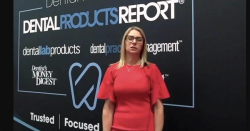- About Us
- Advertise
- Editorial
- Contact Us
- Terms and Conditions
- Privacy Policy
- Do Not Sell My Personal Information
© 2025 MJH Life Sciences™ and Dental Products Report. All rights reserved.
Break away from the credit card transaction trap
Free payment tool from Simplifeye helps eliminate front desk stress and create significant savings for the dental practice.
We all know it: That sinking feeling you get when you learn something and, like a thread pulled in a sweater, it leads to an unraveling, realizing just how much you didn’t know about a topic. For too long, avoiding that feeling-whether they admit or not-has allowed many dental professionals to keep their heads in the sand about the meteoric shifts in how patients want to pay, and how much more dental practices pay for an outdated process.
Dr. Ryan Hungate, CEO and Founder of Simplifeye, is building a business model on bettering workflow without changing behavior. We asked him about that bold promise and what it means for the future of payment in the dental practice.
TC: I’d like to start by talking a little bit about you and how your background informs your work with Simplifeye. You’re an orthodontist, but you’ve also worked for Apple, specifically focused on the customer workflow experience. How did this shape the way that you think about product development, and more precisely the user experience when it came to Simplifeye?
RH: The experience completely changes how I look at dental practices. I think I’m more easily frustrated than the typical doctor by inefficiencies in the practice. With Simplifeye, our original product was Flow, basically, an AppleWatch that told doctors where to go and why the patient was there. We had to teach everyone in the office how to use and, on a really basic level, change how they were acting. That didn’t fly. Behavioral change in a practice is challenging because it either doesn’t work or even if it works on 90 percent of the team, the 10 percent who don’t accept it ruin it for everyone else. That is a training issue compounded by a culture problem.
Now, Simplifeye looks at how to better workflow in the practice, but not change behavior in the office.
TC: Is that possible?
RH: It seems weird, I know, to say, “Apply my technology, but don’t worry, it won’t change a thing. You’ll just make more money.”
TC: Can you give me an example of how that plays out with one of Simplifeye’s tools?
RH: Of course. Take Amplify, our live chat product. We chat for them. We can even schedule the patient for the front desk if they want. The same is true with our new Payments tool. We don’t ask front desk staff to make patient collection calls. Simplifeye automates that interaction. At the end of the day, these are the things we’re helping front desks with.
TC: Of all the different technologies they can invest in, how do you help a doctor get excited about a more streamlined front desk?
RH: Doctors are fantastic in the back. More often than not, they’re knocking it out of the park, providing amazing service. However, in a market where most patients assume that all dentists are on an even playing field, today’s practitioners need to figure out how to compete with something like Smile Direct Club, available 24/7 and the patient doesn’t even have to leave his or her house. Even more intimidating? Smile Direct Club is reinforcing its message with lots of ad dollars. So, how do doctors compete? They start by recognizing that they already have the business, they just have to make the experience better and meet their patients where it is most convenient. That’s where Payments come in, using technology to make treatment affordable.
Related Reading: quip launches quipcare
TC: There are so many different ways that technology is impacting the dental practice, from digital workflow in the operatory, to marketing and patient communication. What were some of the gaps you hoped to address with Simplifeye, and the company’s approach to Payments in particular?
RH: In Silicon Valley, a concept that is often used is “hair on fire problems,” a dramatic name for the things that you will take care of no matter the circumstance. In the dental practice, the first and most significant “fire” is around getting new patients. A steady flow of new patients can lighten the impact of other business problems, so we start there, “Doctor, for your small investment, I’m going to help you get six to 10 new patients a month without any long-term contract.”
Once we’ve started that conversation, I can talk about other products that are integral to the practice, like revenue cycle management. So many of the current payment rails built into the practice management software running today’s practices were actually built in early 2000. In 2019, we have Square-you walk into a coffee shop, tap your phone to pay, and walk out. This convenient experience is what most patients expect nowadays.
One of the biggest issues with the old tech these office systems are built on is that they not only limit ease-of-pay for patients, but they don’t serve the best interest of the dental practice. With Payments, we focus on Card Present Transactions (CPT) and Card Not Present Transactions (CNPT). With CPT, you see my card, look at my face, confirm it is me, and pay 3 percent in merchant fees to the bank every transaction. You could pay less with PayPal-as just one example-but most people don’t do it because they don’t know how much they are paying in the first place. The vendors they are working with are more inclined to remain silent as it protects their own pockets. That is taking advantage of doctors in one of the worst ways imaginable. Amazon and other online vendors are card-not-present transactions. Because of the risk that someone could steal your card and use it to pay for something over the phone or online, payment processors get away with charging an additional 0.5 percent to 1 percent every time.
Let’s come back to how doctors run their businesses. Most still send bills in the mail, which cost $1 apiece to send, and the patient will either write a check to mail back, but more likely, they’ll call your front desk and give you their credit card number, a Card Not Present Transaction, which means a larger fee. That is money they could be saving.
With Simplifeye Payments, we can help doctors save that extra 1 percent per transaction. We retail tokenize credit cards securely, which means that when a patient swipes in person, we can save that credit card number and when they later get a text or email invoice from the practice (that’s right, no more snail mail), then they can choose to use the credit card on file, ApplePay, or GooglePay, which are now all charged as Card Present Transactions, saving money. This is something all doctors should have, but they do not.
Payments can also help dental practices facilitate recurring transactions. Some practices will take payment plans and some won’t. The truth is, when a patient is done being diagnosed, no one says they hope they can’t afford it. Maybe they can’t, or maybe they have to stretch it out to make it affordable. Macy’s will give you the option to pay for a designer purse over a 12-month period, yet medical and dental struggle to meet that challenge.
TC: Isn’t that where dental practices should direct patients to a service like CareCredit?
RH: With this software release, we’re able to give dentists an option beyond CareCredit. If I send a patient to CareCredit to get approved, it is a “black box” process-the patient applies, but I don’t know why they did or did not get approved. If the patient isn’t approved, doctors can feel like they’ve exhausted every effort. If the patient is approved, CareCredit takes 10 to 12 percent of the procedure fee. They collect interest from the patient and fees from the practice- that is a model ripe for disruption.
We take the CareCredit model and turn it inside out. Simplifeye Payments gives doctors the tools CareCredit has-running credit checks, control over standards for approval, FICO reports if they want them—and make them easy to understand. Once patients are approved, they can move onto a payment plan, working out how much they want to put down or how many payments they want to make. Simplifeye processes that every month as a Card Present Transaction, thus keeping costs down and making it easy for the front desk.
This brings me back to how practices can compete with Smile Direct Club, offering braces for $99 per month. They are just the first of many companies that will try to offer dental work at a small rate over a long period of time. Backed by venture capitalists, they can afford to wait out the competition. We want to enable practices to offer braces at a competing price, creating the infrastructure for those payments so that dentists can actually compete.
Related Reading: CS Softdent v18 now includes ePayments Secure
TC: The benefits seem pretty straightforward, but I know you must get pushback. What are concerns dentists raise in conversations with you?
RH: Many are scared that it will be a large change, like electronic health records. If I walked into a practice with the best electronic records system tomorrow, but it meant changing Dentrix-even if it saves them $50,000-they’d tell me to leave. They won’t put their team through a swap of something so integral to the practice.
In contrast, with Simplifeye, we can have you up and running in a matter of moments because we have to ship you the sleek machine that allows you to accept payment wirelessly. We looked at companies like Venmo and Square, who didn’t get big chunks of the market because they are the same old payment services, but rather it was so simple to use that you could sign up with no training at all. That’s what I knew we needed to create for dentistry.
Simplifeye will walk the team through from start to finish and the training for the front desk takes only 30 minutes. We don’t charge for training because we’re honored that you’d invest in our software in the first place. For too long, companies have gotten away with releasing complex software that is hard to implement, just because there weren’t better options available. Not anymore.
TC: Security is a primary concern in healthcare. Do you hear dentists' voice concerns about the topic?
RH: Simplifeye is HIPAA and PCI compliant and today almost all credit card and debit card companies are more committed to security than ever before. But as I meet with doctors, they aren’t really worried about identity theft or credit card fraud; they’re more concerned about what they don’t know. When we start to talk with them about what their merchant fees are, they are shocked. They start to think about what else they don’t know and the different fees blow their mind.
The technology I’m talking about may seem new to our industry, and healthcare in general, but Starbucks has used it for the last five years. It is time for dental practices to catch up.
TC: If a practice was to implement Simplifeye tools, what difference would you hope to see in that practice a year from now?
RH: I’d love it if the first thing the team says is, “We didn’t even really notice it.” To me, that means there wasn’t pain caused by implementation. Secondly, I’d want to hear a front desk team talk about how their jobs were made easier by the software. Lastly, I’d love to have the dentist say they saved or made $50,000 more from using Simplifeye’s solutions.

 Download Issue: Dental Products Report November 2019
Download Issue: Dental Products Report November 2019

